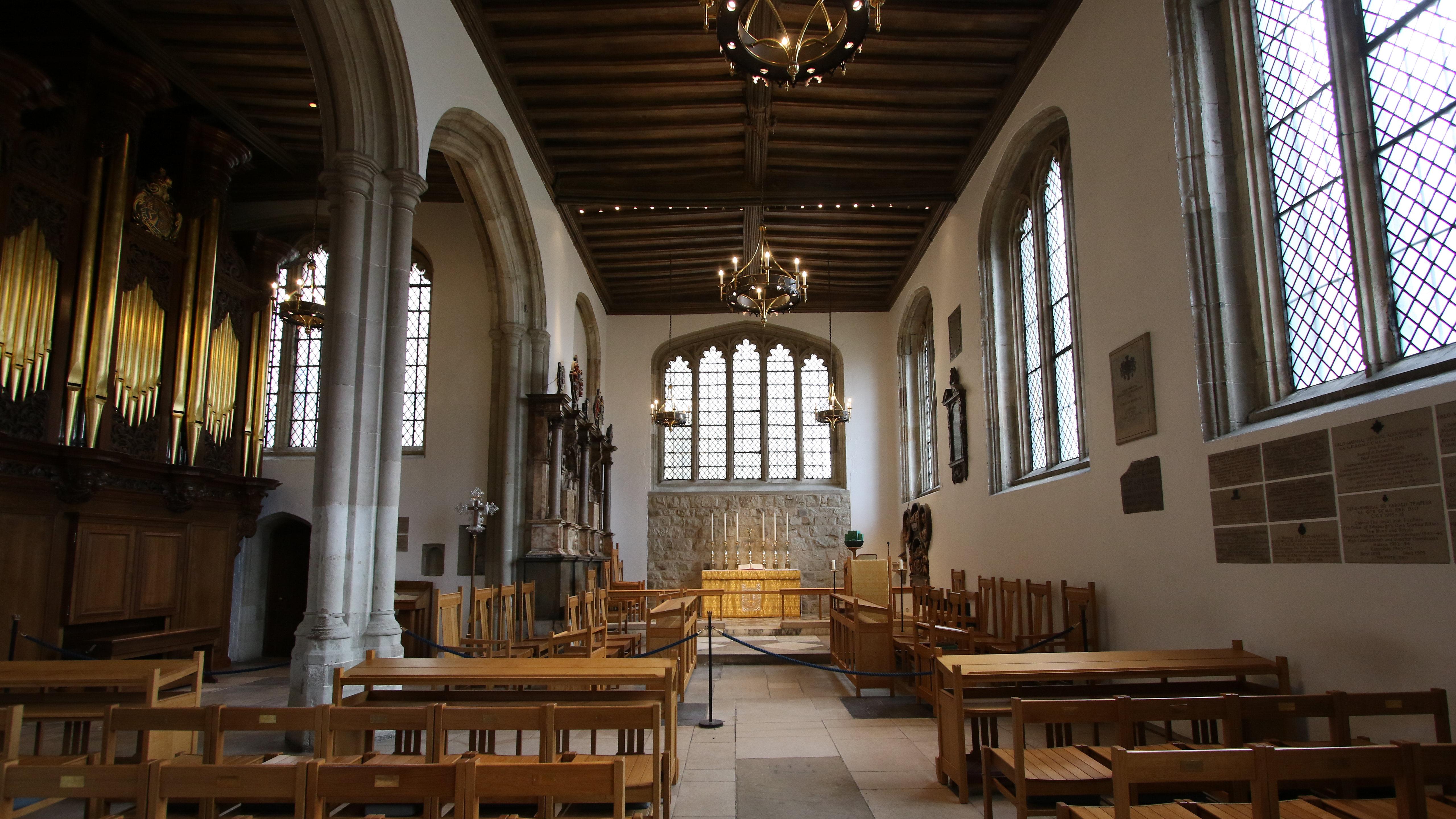All Hallows by the Tower
City of London, Greater London
The oldest church in the City of London.

Historical documents refer to St Peter's as a Royal Chapel as early as the 12th century, today it is a Chapel Royal and Royal Peculiar; directly under the jurisdiction of The Queen.
HM Tower of London, Greater London
The Chapel of St Peter ad Vincula is a special and unique place of worship with an extraordinary history. It is the parish church to HM Tower of London, the most visited heritage site in the country.
Building started on the current site of the Chapel of St Peter ad Vincula in the early 1500s but the presence of a religious building predates even the White Tower, built for William the Conqueror in 1078.
In common with many other castle chapels, St Peter ad Vincula was a Saxon building which was ‘taken into’ a nearby Norman castle. In 1240, Henry III undertook repairs and improvements. Clearly this work was not to the taste of his son, Edward I, as in 1286 he demolished the chapel and built a new one. Edward’s chapel burnt down in 1512 and was replaced with the present structure.
During the 18th century, a gallery was built on the north and west walls to seat soldiers, while large wooden box pews were built on the ground floor for officers and officials. The last major renovations took place in 1970-1971, when all the Victorian pews and the stone pulpit were removed.
As a result of the Victorian renovations, the resting places of Anne Boleyn, Catherine Howard and Lady Jane Grey were discovered in the chancel, near the altar. This led to the chapel gaining its reputation as the ‘saddest spot on the earth’. Now the chapel is home to several important monuments and tombs.
The crypt has had two lives, operating first as a storage area for the ordnance office and secondly as a resting place for deceased members of the Tower’s community including St Thomas More who was put to death in 1535. The ordnance storehouses were built in the first half of the 16th century under Henry VIII. However, after the fire of 1841 which destroyed the Grand Storehouse, the decision was taken to remove bodies from the chapel’s graveyard. The construction of the new Waterloo Barracks lead to the removal of the bodies. The ordnance buildings were converted into a crypt. Many of the original lead plaques are on the crypt’s walls.
Today, as the site of St Thomas More’s tomb and the place where we remember Bishop John Fisher, the crypt is an incredibly important holy and historic place.
The chapel has many links to our national heritage, including through St Thomas More and St Bishop John Fisher, Blessed Margaret Pole, Queen Anne Boleyn, Queen Katherine Howard and Lady Jane Grey. Other notable figures include Thomas Cromwell and Sir Thomas Overbury.
City of London, Greater London
The oldest church in the City of London.
City of London, Greater London
First mentioned in the 12th century, some fabric of the 1270 church remains, including the crypt.
City of London, Greater London
You really will feel secluded in this gem of a City garden.